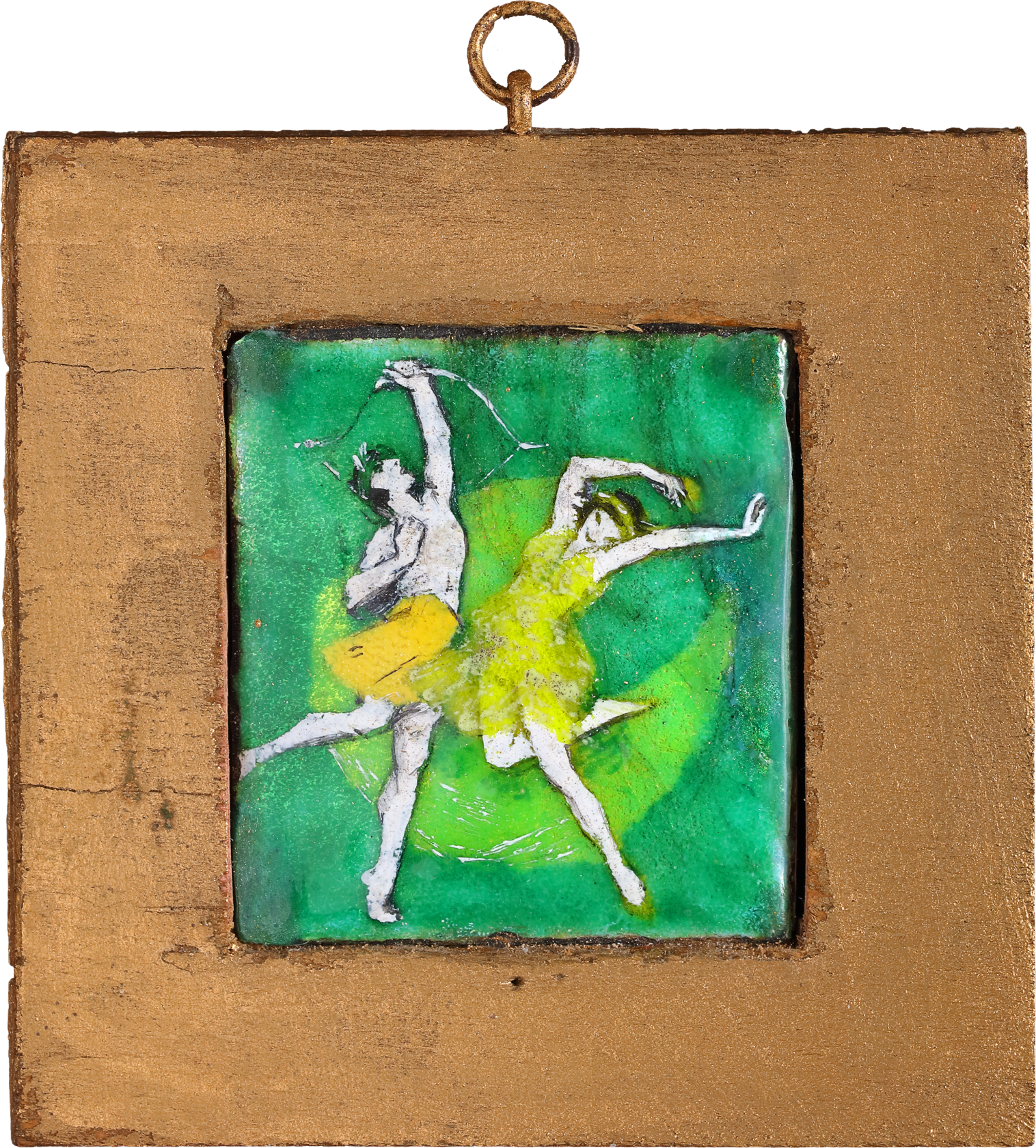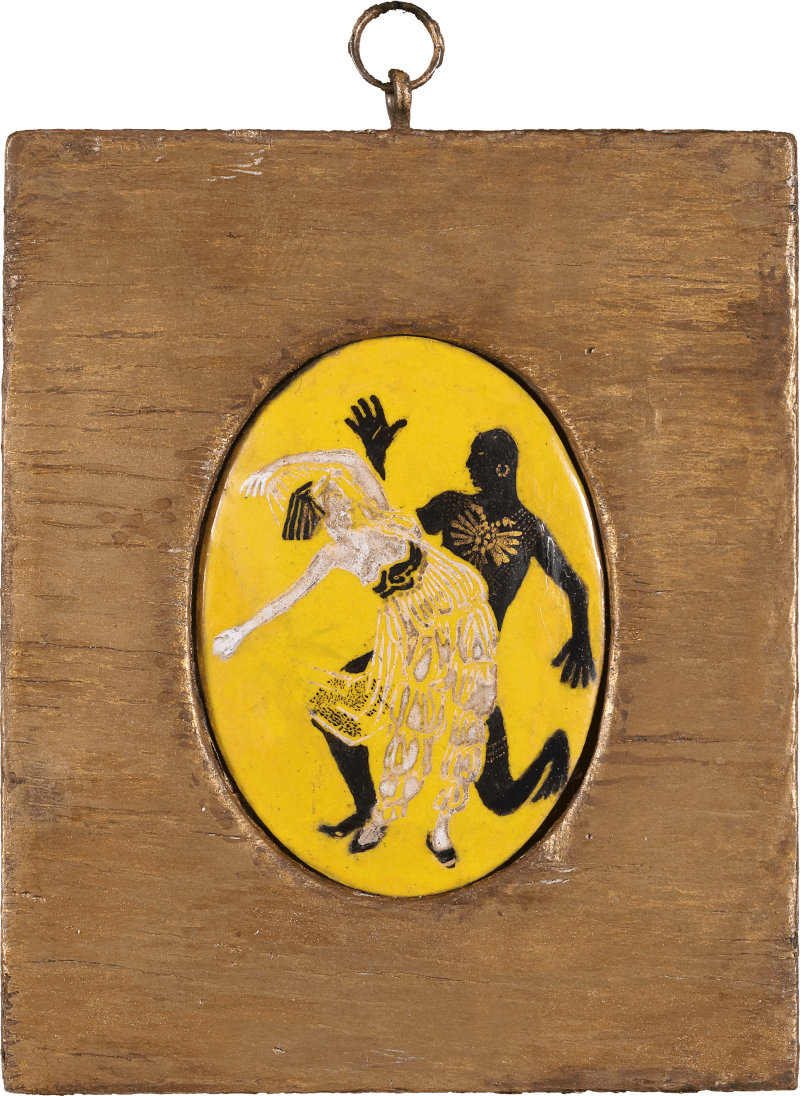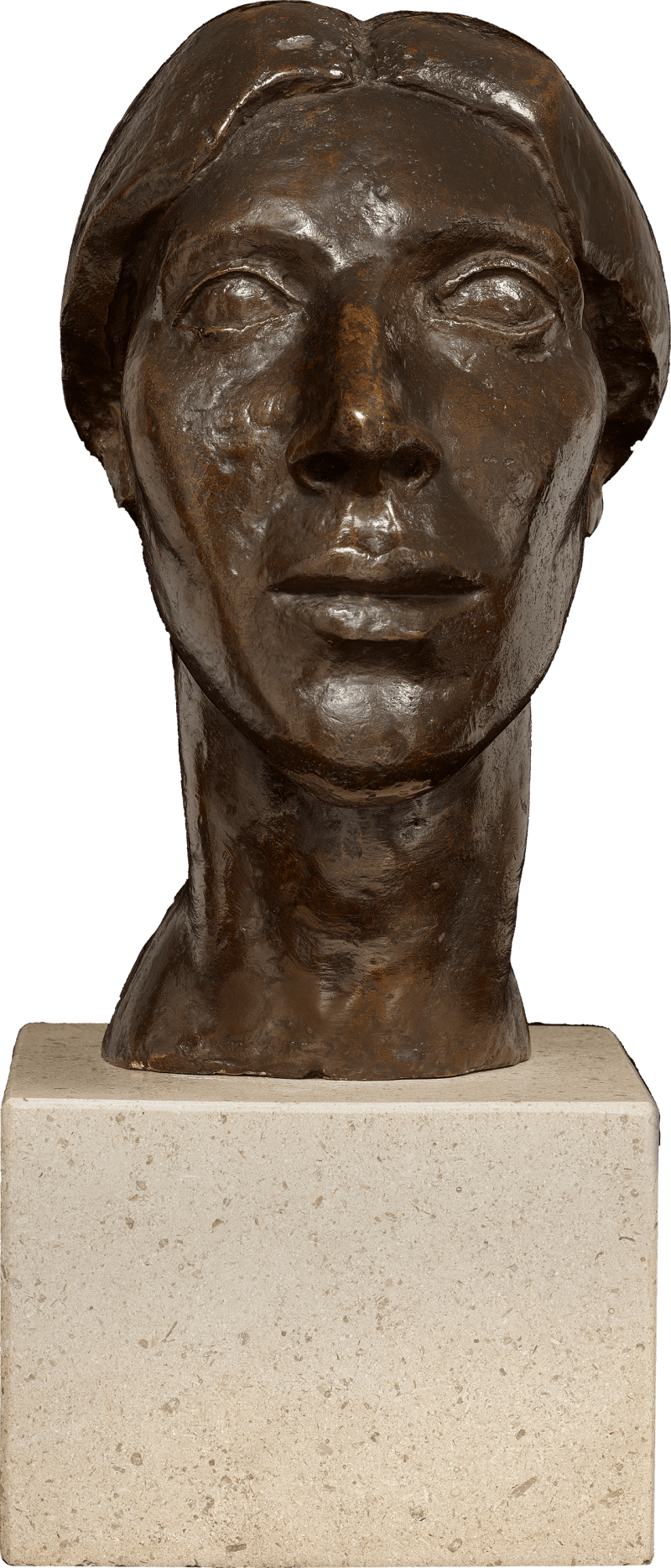This rare, jewel-like enamel of dancers is one of only around nine works in this medium made by Laura Knight. They were made in collaboration with her friend, the jeweller Ella Naper, in Lamorna, Cornwall, in 1914 and were inspired by dancers and scenes of the Ballets Russes.
Knight’s enamels are a surprising departure from her oil paintings. They are miniature in scale but grand in ambition, requiring a sharp level of precision and patience. She had turned to enamel work under the watchful eye of Naper, who guided her through the challenging, almost alchemical process. Naper, working from her studio above Cornwall’s Lamorna Valley, became Knight’s collaborator and muse; she modelled for Knight’s notable 1913 Self Portrait with Model [fig. 1] and several of her celebrated coastal scenes, including Spring in Cornwall. The outbreak of the First World War brought constraints that restricted landscape painting along the coast, perhaps prompting Knight to turn her creativity inward.
Knight had...
This rare, jewel-like enamel of dancers is one of only around nine works in this medium made by Laura Knight. They were made in collaboration with her friend, the jeweller Ella Naper, in Lamorna, Cornwall, in 1914 and were inspired by dancers and scenes of the Ballets Russes.
Knight’s enamels are a surprising departure from her oil paintings. They are miniature in scale but grand in ambition, requiring a sharp level of precision and patience. She had turned to enamel work under the watchful eye of Naper, who guided her through the challenging, almost alchemical process. Naper, working from her studio above Cornwall’s Lamorna Valley, became Knight’s collaborator and muse; she modelled for Knight’s notable 1913 Self Portrait with Model [fig. 1] and several of her celebrated coastal scenes, including Spring in Cornwall. The outbreak of the First World War brought constraints that restricted landscape painting along the coast, perhaps prompting Knight to turn her creativity inward.
Knight had been mesmerised by the Ballets Russes when they performed in London during the years before the War. When they performed at Covent Garden as part of the ‘Coronation Gala’, Knight travelled the long journey from Cornwall to see them.[1] These formative years arguably laid the foundations for Knight’s lifelong interest in performance, evident in her acclaimed paintings of the ballet, circuses and fairgrounds. Another enamel, also depicting Ballets Russes dancers, was given by Knight to her friend and collector Marjorie Averill in 1958.[2] In an accompanying letter to Averill, Knight wrote: ‘The enamel is Limoges, it is one of about eight I did in the year 1914 with the help of the jeweller, Mrs Ella Naper.’ In an amusing nod to the durable nature of the enamel medium, she added ‘You can’t injure this enamel except with a hammer or dropping it on a stone floor or treading on it.’[3]
For Knight, enamelling was a meticulous, intense departure from the spontaneous sketches she was known to capture directly from the theatre stalls. The process required precise firing of powdered glass onto metal, demanding near-clinical cleanliness to avoid the risk of cracking. Other examples from this series testify to the ambition and mastery Knight brought to this challenging medium. In June 1915, Knight exhibited her series of enamels at the Fine Art Society, London, some encased in Naper’s jewelled frames. John Branfield, author of ‘Ella and Charles Naper: Art and Life at Lamorna’, summarises the vivacious exhibition thoughtfully: ‘The mood of the show was meant to be sunny, to counteract the gloom about the war, and Ella’s jewellery sparkled.’[4]
[1] Timothy Wilcox, (2008) Laura Knight at the Theatre: Paintings and Drawings of the Ballet and the Stage. London: Unicorn Press, p.21.
[2] Dame Laura Knight, Pavlova and Mordkin, 1914, Philip Mould & Company: this work is also for sale with Philip Mould & Company.
[3] Private collection; sold Bonhams, London 27 September 2017, lot 124.
[4] John Branfield, (2003), Ella and Charles Naper: Art and Life at Lamorna. Bristol: Sansom & Company, p.31.



















